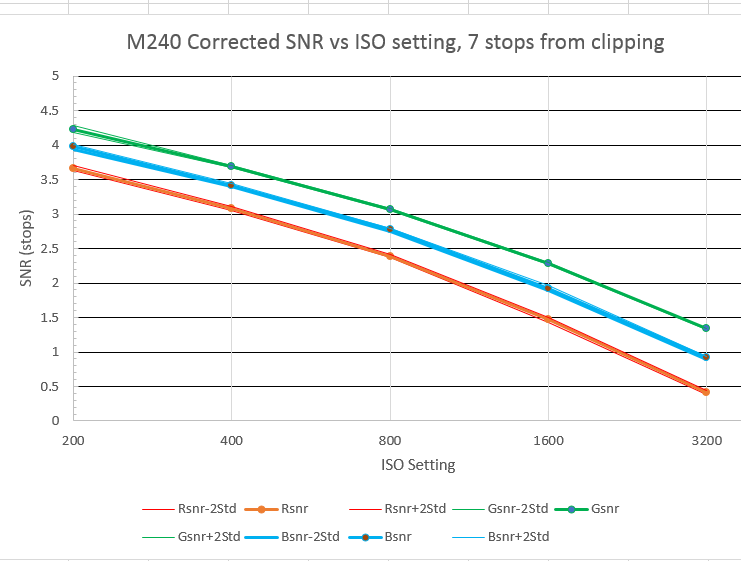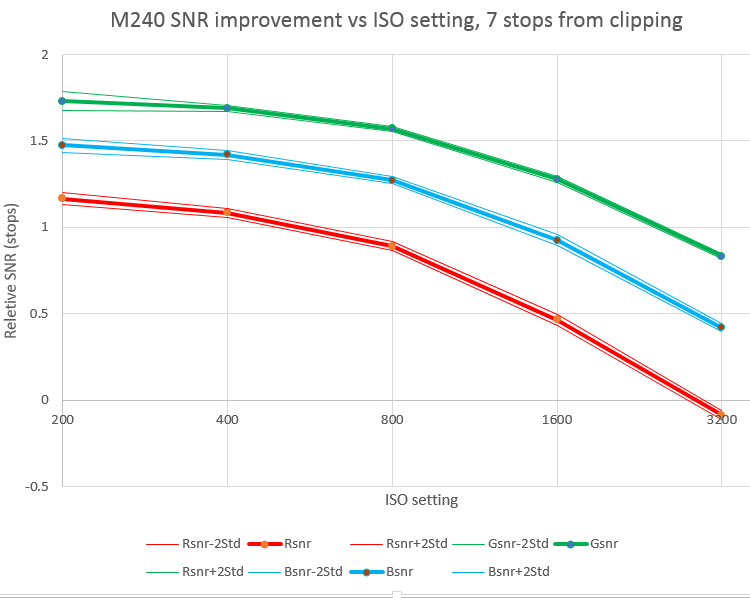Earlier today I posted SNR vs ISO curves for exposures yielding values two stops down from clipping. Yesterday, I posted SNR vs ISO curves for exposures yielding values five stops down from clipping. I decided to explore what happens seven stops down from clipping in the blue channel, a little brighter than that in the two green channels, and a little darker than that in the red channel.
I’d never done this test before. I was especially interested in doing it with the M240 because of the analogous results that I’d obtained when I was doing the noise floor tests. In those exposures, the noise floor seemed artificially low in the ISO range 100 to 800, as if there were a negative offset before the ADC. I wanted to see if there were any anolmolies in the deep shadow region of my SNR vs ISO tests.
Here are the results:

In the deep shadows, turning up the ISO from 100 to 3200 creates about a stop more noise — twice as much — as making the correction in your raw processor.

Leave a Reply